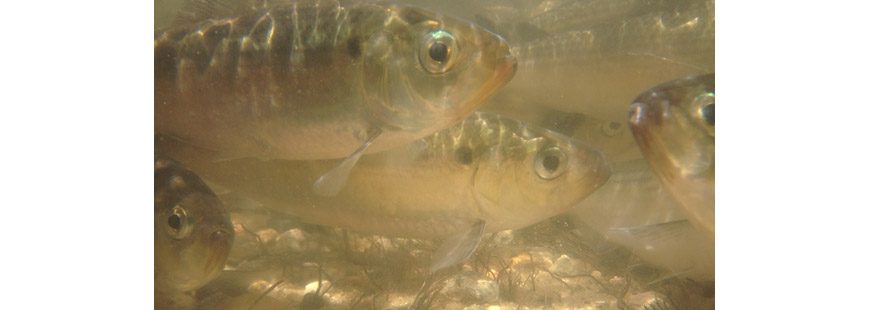This article is reprinted with permission from the Wild Oceans Horizon Newsletter Spring 2024. Top photo: river herring
The use of ecosystem based fisheries management (EBFM) is widely accepted as the strongest framework for achieving sustainability in fisheries, both in terms of ecological and human well-being. More than a decade ago, the regional fishery management councils began developing Fishery Ecosystem Plans (FEPs) to help incorporate ecosystem science into management decisions. The councils made steady progress pursuant to the FEPs by protecting unmanaged forage fish and developing ecosystem risk tables. Now, we are on the verge of an EBFM building boom, with NOAA Fisheries investing nearly $200 million in the scientific building blocks and the Council’s receiving $20 million more to realize the architectural plans.
On the science side, the 2022 Inflation Reduction Act (IRA) provided NOAA Fisheries with the opportunity to focus time and energy on moving EBFM from concept to commonplace. In response, NOAA Fisheries decided to strengthen the agency’s ecosystem science and survey expertise. The investment will:
- help scientists build a dynamic system that will incorporate climate and ecosystem environmental data,
- provide real-time advice and long-range projections, and
- inform and support management decisions for affected communities
On the management side, the regional councils will receive funds to:
- implement fishery management measures necessary to advance climate ready fisheries by improving climate resiliency and responsiveness to climate impacts, and
- develop and advance climate-related fisheries management planning and implementation efforts in support of underserved communities.
The regional fishery management councils submitted a suite of projects to NOAA Fisheries for funding. Many of the proposals echo Wild Oceans priorities over the past decades.
Specifically, one of the Mid-Atlantic Fishery Management Council proposals includes development of a forecast to reduce bycatch of river herring in the mid-water trawl fishery. This project will produce maps of areas of high river herring bycatch risk weekly during the midwater trawl fishery based on sea-surface temperatures, and work with industry to achieve voluntary avoidance of these areas. Linking river herring habitat to ecosystem indicators can provide managers with ways to protect river herring hotspots in a dynamic ocean. While this information is vital towards our collaborative work to restore river herring populations by reducing their at-sea catch, the voluntary nature could render it ineffective.
Part of the Pacific Council proposal also focused on mitigating bycatch. One of their projects acknowledges that avoiding bycatch will likely become more challenging as climate change results in more extensive shifts in distribution and occurrence of marine species. As a result, more traditional management interventions such as static time area closures may become less effective. Therefore, they are seeking to develop climate-ready fishing methods that mitigate bycatch of non-target, associated species in a changing ecosystem.
Wild Oceans has been working with the Council for many years to build a framework to explore alternative, climate resilient methods for targeting highly migratory species along the U.S. West Coast. In June, we participated in a workshop to brainstorm how to use exempted fishing permits to build sustainable fisheries and how to incorporate new technologies such as dynamic ocean management into bycatch mitigation. The climate science work funded at the national level will prove crucial towards meeting this goal.
NOAA Fisheries has an unprecedented opportunity to mainstream ecosystem information to build a better fishery management framework that can conserve ocean resources and coastal communities into the future. Wild Oceans will continue to provide the critical thinking and stakeholder engagement to ensure NOAA Fisheries seizes this opportunity.


